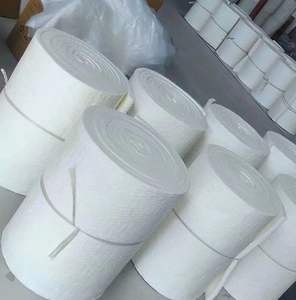Discover Premium Ceramic Products | Durability & Elegance United | Advanced Ceramics
1. Introduction
Just 24 hours ago, a major materials science conference in Germany highlighted breakthroughs in ultra-high-temperature ceramics—specifically, advancements in silicon carbide-based components that can withstand over 1,600°C without degrading. Among the stars of the show? The humble yet powerful silicon carbide crucible.

Silicon carbide crucibles are not just lab curiosities—they’re essential tools in metal casting, glassmaking, and even semiconductor production. But what makes them so special? And why are you also seeing ‘silicon carbide’ on everything from baking dishes to dinner plates? Let’s break it down.
2. What Is a Silicon Carbide Crucible?
A silicon carbide crucible is a container made from silicon carbide (SiC), a compound of silicon and carbon known for its extreme hardness, thermal conductivity, and resistance to thermal shock.
These crucibles are engineered to hold molten metals, glass, or other high-temperature materials without cracking, warping, or contaminating the contents. Unlike traditional clay or graphite crucibles, silicon carbide versions offer longer service life and better performance under rapid heating and cooling cycles.
3. Key Properties That Make Silicon Carbide Crucibles Stand Out
- Exceptional thermal shock resistance
- High thermal conductivity (heats evenly and quickly)
- Chemical inertness (won’t react with most molten metals)
- Mechanical strength at elevated temperatures
- Low thermal expansion
These traits make silicon carbide crucibles ideal for foundries, jewelry casting, and laboratory settings where precision and durability matter.
4. Silicon Carbide vs. Other Advanced Ceramics
When comparing materials for high-temp applications, two names often come up: boron carbide and silicon nitride.

Boron carbide vs silicon carbide: Boron carbide is harder (used in body armor), but it’s more brittle and expensive. Silicon carbide offers a better balance of toughness, cost, and thermal performance—making it the go-to for crucibles.
Silicon nitride, on the other hand, excels in applications requiring high fracture toughness and creep resistance. You’ll find silicon nitride crucible factory output in aerospace and turbine components—but for general-purpose melting, silicon carbide remains dominant.
Interestingly, custom silicon nitride heat shields and silicon nitride rings are gaining traction in extreme environments, but they haven’t replaced silicon carbide in mainstream crucible use.
5. Beyond Crucibles: The Surprising Everyday Uses of Silicon Carbide Ceramics
You might be surprised to learn that silicon carbide isn’t just for industrial furnaces. Thanks to its durability and aesthetic appeal, it’s now used in high-end ceramic kitchenware.
Brands are marketing items like silicon carbide ceramic baking dish, silicon carbide ceramic butter dish with lid, and even silicon carbide ceramic dinner plates. These aren’t just gimmicks—they leverage SiC’s heat retention and scratch resistance for practical cookware.
Popular items include:
- Silicon carbide ceramic casserole dish with lid
- Silicon carbide ceramic serving bowls and platters
- Silicon carbide ceramic ramekins and pie dishes
- Silicon carbide black ceramic plates and white ceramic plates
- Silicon carbide ceramic children’s plates (thanks to chip resistance)

Some even mimic classic designs like silicon carbide blue white porcelain plates or silicon carbide christmas ceramic platter for seasonal dining.
6. Industrial Components Made from Silicon Carbide
Beyond cookware and crucibles, silicon carbide is molded into a wide range of industrial parts:
- RBSiC silicon carbide tile block for kiln linings
- Silicon carbide ceramic columns and bricks for furnace insulation
- Silicon carbide burner nozzles for efficient combustion
- Silicon carbide rings and tubes for sealing and support
Silicon carbide tubes are especially critical—they’re used as thermocouple protection tubes, furnace tubes, and even in chemical processing due to their corrosion resistance. Variants like silicon carbide zirconia tubes or silicon carbide mullite tube offer tailored performance for specific environments.
In plumbing and fluid control, you’ll find silicon carbide ceramic disc taps, silicon carbide ceramic disk for tap, and silicon carbide ceramic sanding discs—all benefiting from SiC’s wear resistance.
7. Manufacturing and Market Trends
The production of high purity silicon nitride powder and silicon carbide ceramics is booming, driven by demand in electric vehicles, renewable energy, and advanced manufacturing.
Meanwhile, artisans are experimenting with handcrafted silicon carbide pottery dishes, blending industrial material with artistic form. Even silicon carbide ceramic plates for painting are emerging as durable artist canvases.
Despite the rise of alternatives, silicon carbide remains the backbone of high-temperature ceramics—both in heavy industry and your kitchen.
8. Conclusion
From molten metal in a foundry to a casserole bubbling in your oven, the silicon carbide crucible—and its ceramic cousins—demonstrate how advanced materials can bridge industrial and domestic worlds. Its unmatched blend of strength, heat resistance, and versatility ensures silicon carbide will remain indispensable for years to come.
Our Website founded on October 17, 2012, is a high-tech enterprise committed to the research and development, production, processing, sales and technical services of ceramic relative materials such as What. Our products includes but not limited to Boron Carbide Ceramic Products, Boron Nitride Ceramic Products, Silicon Carbide Ceramic Products, Silicon Nitride Ceramic Products, Zirconium Dioxide Ceramic Products, etc. If you are interested, please feel free to contact us.
